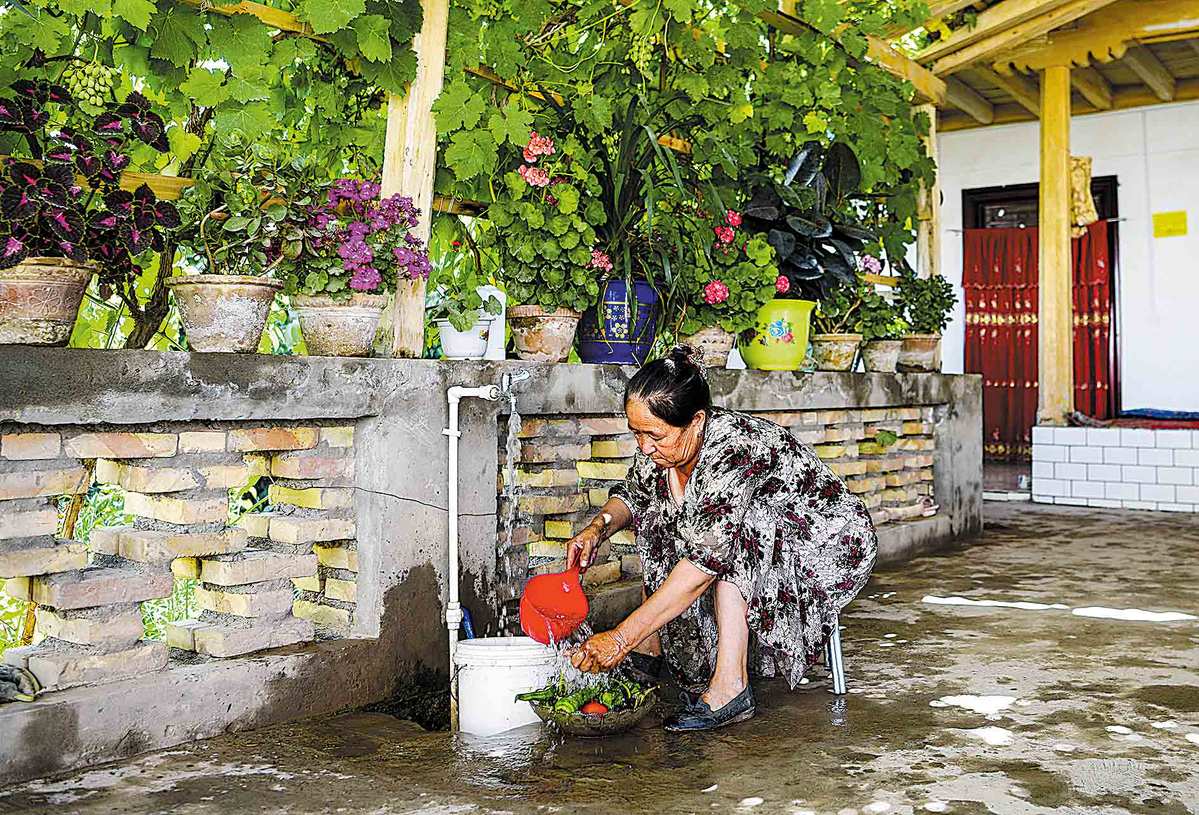Projects pipe safe drinking water to remote villages


In the past, residents in the village of Ushkaplun had to trek a rugged mountain road for two hours to the nearest water source. For the 114 households and 398 residents in the remote village in the south of the Xinjiang Uygur autonomous region, donkeys were essential for this frequent, toilsome work.
They used only gauze to filter the water. When gauze was not available, they used a handkerchief. It was not a strange occurrence for residents in the village, at an altitude of 2,800 meters, to fall sick after drinking the water.
"We sometimes got our drinking water from the same river where our sheep and cows drink," recalled villager Alijan Akim.
Now, however, all villagers have been spared that trouble. They can enjoy treated, clean drinking water straight from the tap at home.
Taking a shower used to be something of a luxury, but now villagers can enjoy one every day. "The tap water has made our life so much more convenient," Alijan said.
The change happened in 2018 when local authorities invested almost 9 million yuan ($1.3 million) to build a water pumping and treatment plant for the village, which takes water from a spring at an altitude of 3,500 meters.
"There were huge difficulties in the construction work because large machinery could not enter the area," said Chen Dong, deputy head of the water authority in Yutian county, where Ushkaplun is located.
He said they had to rely, again, on donkeys to move construction materials in. Sometimes, workers had to carry materials on their shoulders.
The cost-prohibitive project is a microcosm of the country's endeavor to address the difficulties of rural residents and to provide clean drinking water in rural Xinjiang, especially those areas previously beset by poverty.
Before 2020, in southern Xinjiang alone, there were 67 villages with no access to tap water like Ushkaplun. Located at high altitudes and in complicated geographical conditions, all of the villages are remote and sparsely populated.
To supply local residents with safe drinking water, the water resources bureau in Payzawat county, also in southern Xinjiang, had to overcome even more challenges. There were no suitable water sources above the ground and the groundwater in the county has excessive amounts of sulfate, fluorine and arsenic.
"The frequent earthquakes in the county made the quality of groundwater terribly bad," said Wang Junhui, head of the bureau. "If people consume the water for an extended period of time, they will suffer alopecia. The water can also yellow teeth."
After a long period of surveying and research, local authorities decided to divert water from more than 100 kilometers away in another county to meet the drinking water demand of the 470,000 residents in Payzawat.
With a total investment of around 1.75 billion yuan, a water diversion project began in May 2019. On May 20,2020, the last part of the project was completed, which serves 15,300 rural residents, and an era of safe drinking water began for all in the county.
The historic breakthrough happened thanks to the huge investment and human resources mobilized by the Xinjiang government, it said. After a total of 19.5 billion yuan in investment was made from 2016 to 2020, more than 90 percent of the region's rural residents now have access to tap water, up from 71 percent in 2015.
There are still some weak links, the regional government said. Some drinking water projects are not able to guarantee adequate and sufficient water supply of high quality. Some aged pipes need replacing.
Aside from enhancing maintenance work, the authority said it will urge local governments to accelerate their work in mapping out protected areas for major water sources.
- Guangdong urged to drive high-quality development
- Shanghai hosts 6th intl 3E talent fair
- Xi's special envoy attends inauguration of Bolivian president
- Countdown to 15th National Games: On-site warm-up entertains audience
- Eight missing after cargo ship collides with fishing vessel near Shandong
- Investing in people: a worthwhile investment





































